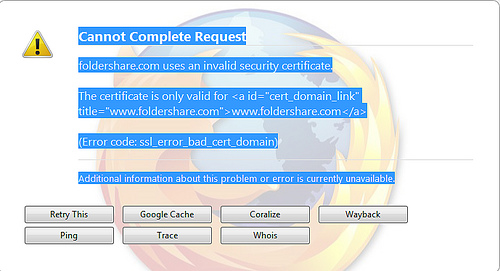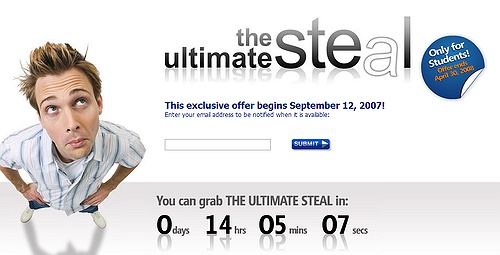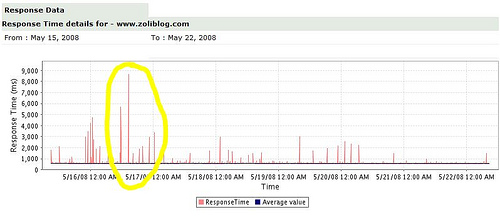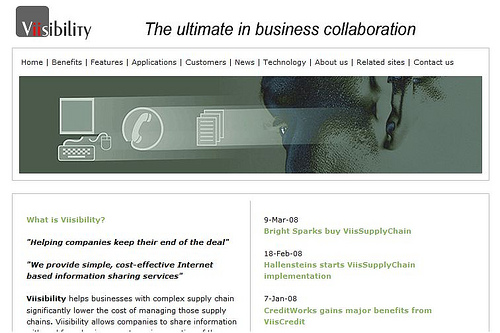Cliff Shaw is a serial SaaS entrepreneur who keeps on coming up with really useful services that just don’t make it as a business.
 ProtectMyPhotos was my favorite photo backup and synchronization service. Unlike Flickr, Photobucket, Zooomr and just about all the photo site focusing on sharing your photos, this one did not require manual uploads. In fact the best feature was that after initial setup, you could completely forgot about it. Just like Mozy, the general-purpose online backup service, ProtectMyPhotos worked away in the background, non-intrusively, throttling back at times of heavier computer use. With added bells & whistles (online view & edit, sync between online and several offline versions..etc) it was a perfect service – for free, that is. Apparently it failed to attract enough paying customers, so eventually it shut down.
ProtectMyPhotos was my favorite photo backup and synchronization service. Unlike Flickr, Photobucket, Zooomr and just about all the photo site focusing on sharing your photos, this one did not require manual uploads. In fact the best feature was that after initial setup, you could completely forgot about it. Just like Mozy, the general-purpose online backup service, ProtectMyPhotos worked away in the background, non-intrusively, throttling back at times of heavier computer use. With added bells & whistles (online view & edit, sync between online and several offline versions..etc) it was a perfect service – for free, that is. Apparently it failed to attract enough paying customers, so eventually it shut down.
 It did not completely die though: Cliff Shaw’s next startup, DocSyncer clearly showed signs of it’s “parent”: the UI was quite similar to ProtectMyPhotos, and they leveraged a lot from the core synchronization engine of the previous product. It looked like a perfectly executed turnaround: the existing technology found new purpose. DocSyncer filled a void left by the web-office providers: it synchronized desktop documents with Google Apps. I was quite certain they would have a short life-span, but this time with a happy ending, Google taking them out. Since the acquisition did not materialize, I can only assume either they could not come to terms or Google is already working on their own solution.
It did not completely die though: Cliff Shaw’s next startup, DocSyncer clearly showed signs of it’s “parent”: the UI was quite similar to ProtectMyPhotos, and they leveraged a lot from the core synchronization engine of the previous product. It looked like a perfectly executed turnaround: the existing technology found new purpose. DocSyncer filled a void left by the web-office providers: it synchronized desktop documents with Google Apps. I was quite certain they would have a short life-span, but this time with a happy ending, Google taking them out. Since the acquisition did not materialize, I can only assume either they could not come to terms or Google is already working on their own solution.
DocSyncer is about to shut down. Quote from the website:
We’ve figured out in a very short amount of time that DocSyncer is a cool tool – but not a business.
I really hate to see it go. No transition to web-based applications is complete unless we can bring our old baggage, i.e. transfer existing desktop documents to the online service. I see evidence of interest day by day, in the 100K or so hits my two “import your history to gmail” guides received. DocSyncer did better then import, it offered true synchronization, but I’d be quite satisfied just to see one-way batch import tools to Google Docs and Zoho, the two leading service providers.
The DocSyncer site says:
Until we meet again, good luck and thank you for the support!
 “Meet again”: Cliff does not talk about his next gig yet, but his LinkedIn profile lists him as CEO of Picstreem. His profile also reveals four startup gigs in the past, two of which getting sold. He is a comeback guy, I am looking forward to seeing Picstreem.
“Meet again”: Cliff does not talk about his next gig yet, but his LinkedIn profile lists him as CEO of Picstreem. His profile also reveals four startup gigs in the past, two of which getting sold. He is a comeback guy, I am looking forward to seeing Picstreem.
In the meantime let’s hope that Google and Zoho will soon offer mass migration, perhaps synchronization.
Update (6/17/08): Wow, it’s amazing how many blogs picked up the story, all without a single bit of accreditation. Thanks, gals and guys! 


 . (Yes, I know, we get what we pay for, and this is a free service – it’s still a ridiculous outage.)
. (Yes, I know, we get what we pay for, and this is a free service – it’s still a ridiculous outage.)

 When I lived on the East Coast and flew US Airways (back than just USAir) a lot, we just called it Useless Air. Today I received an email from Useless Air trying to get me buy back the miles I lost:
When I lived on the East Coast and flew US Airways (back than just USAir) a lot, we just called it Useless Air. Today I received an email from Useless Air trying to get me buy back the miles I lost: I’ve pretty much said everything there is to say about
I’ve pretty much said everything there is to say about 






 Cambrian House, the poster-boys of Crowdsourcing are essentially dead – assets being sold in a garage sale for a fraction of what investors put in.
Cambrian House, the poster-boys of Crowdsourcing are essentially dead – assets being sold in a garage sale for a fraction of what investors put in.  Ben Kepes drew my
Ben Kepes drew my 


Recent Comments